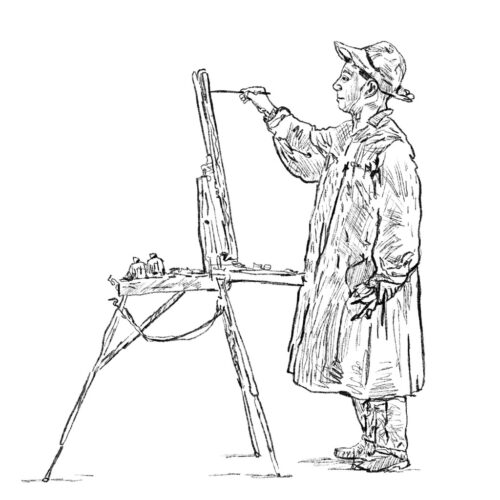If you are interested in more of Picasso’s prolific style, don’t bother taking the T to the Museum of Fine Arts (MFA). Instead, just walk a block or so and up a few flights of stairs to the Harvard Art Museums’ third floor, where you can find a new exhibit dedicated entirely to Picasso.
This exhibit on the third floor is in the Fogg Museum, one of the three art museums that comprise the Harvard Art Museums. The Fogg Museum is home to visual artworks of some of the most famous artists from the Middle Ages to contemporary times. Visiting the Fogg is an experience that contends with going to the MFA in Boston or the Metropolitan Museum of Art in New York City. However, the museum’s accessibility makes Harvard students take it for granted as it serves additional purposes as the location of a class, a place to do homework with a friend, or another cafe to buy a matcha from.
Despite the wide variety of works of art chosen by the curator, Suzanne Blier, to celebrate Picasso’s versatility and evolving style, the exhibit’s title, “Picasso: War, Combat, and Revolution,” revolves around the iconic Guernica, a massive 11 ft. x 25 ft. canvas showing an elaborate gray, black, and white scene. Although Guernica may not be present in the exhibit, many valuable primary sources and photographs offer the average art connoisseur insight into both Picasso’s artistic and political significance.
Guernica was commissioned by the Spanish Republican government for the 1937 Paris World Fair. To bring awareness to the ongoing conflict, the painting primarily presents the mythological motifs of a matador fighting a minotaur. This is a metaphorical demonstration of Picasso’s anti-war sentiments. The title of the work directly references the aerial bombing of the Spanish town of Guernica earlier that year by Nazi Germany and Fascist Italy.
Professor Suzanne Blier gave historical context for its limited duration in the United States: “When Guernica came to this country during World War II, he asked that it be traveled so that he could raise funding to support the anti-fascist movement in Spain. It went back to Spain after the government changed.” During its time in the United States, the artwork found itself in New York City’s Museum of Modern Art (the MoMA). It was briefly lent to the Fogg Museum on two separate occasions, in 1941 and 1942.
Blier, a historian for the History of Art and Architecture & African American Studies department, curated the new Picasso exhibit as she developed a new course for undergraduates. The emphasis on Guernica is related to a new course in the Art History department, World Fairs, a small seminar that “addresses questions of cultural display through the art and architecture of world fairs, mid-nineteenth century to present.” When asked how the World Fairs expressed cultural display and if it was emphasized mainly through artistic advancements, Blier responded that “discussions focus on a key theme—economics, technological and science questions, gender, race, art and literature, etc. The students take up each of these subjects from the vantage of their own fairs.” Students pave their own way in this course, and it is up to them to cultivate the artistic resources presented in the exhibit.
While Picasso may not be the focal point of this course, his artistic relevance in numerous World Fairs Blier cited, such as “1900 Paris and 1906 Marseille,” and the “Trocadero where the African artworks were found and created in an earlier French fair” makes him very relevant to the course. “We visited the exhibit as a class, and go back to the exhibition in class discussion,” Blier said. “We have discussed Picasso’s artistic importance and the fact that his important political role is often under-explored. We also spent time in class talking about how Africans and other colonized people are addressed in the fairs, a key factor in the fairs that Picasso and the others attended.”
Blier did not shy away from praising Picasso’s impact despite the recent uncovering of his problematic persona. When asked about discussing Picasso as a controversial figure in class, Blier said, “All artists can be controversial, but some of Picasso’s controversy is based on a misreading of his famous painting, Les Demoiselles d’Avignon.” This painting may not be part of the exhibit, but Blier recognizes Picasso is “addressing, in this painting specifically, issues around colonialism and evolution.”
The aim of Blier’s collection of Picasso artworks is not to alter people’s impressions of Picasso as a person but rather to discuss “Picasso’s artistic importance, and the fact that his important political role is often under-explored.” Hopefully, students in the World Fairs course who visit the Fogg for class can foster an appreciation of his art from the privilege of learning from Suzanne Blier.
Lucie Stefanoni ’27 (luciestefanoni@college.harvard.edu) is an artist who does journalism on the side.

